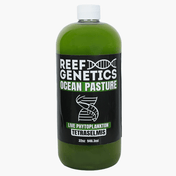Acropora corals are often considered the crown jewels of reef aquariums, revered for their stunning beauty and vibrant colors. These corals are a favorite among advanced hobbyists due to their intricate growth patterns and the challenge they present. This comprehensive guide will explore everything you need to know about Acropora corals, from their natural habitat to their care in home aquariums.
Understanding Acropora Corals
What Are Acropora Corals?
Acropora corals belong to the family Acroporidae and are one of the most diverse and widespread coral genera. Known for their fast growth and complex structures, they play a crucial role in reef building. Their branching forms provide habitat for various marine organisms, contributing significantly to the biodiversity of reef ecosystems.
Types of Acropora Corals
There are over 150 species of Acropora corals, each with unique characteristics. Some popular types include:
- Acropora tenuis: Known for its vibrant colors and thick branches.
- Acropora millepora: Recognized by its fuzzy appearance due to long polyps.
- Acropora digitifera: Features finger-like projections, often found in blue or green hues.
- Acropora formosa: Displays a more slender, branching form with delicate tips.
Natural Habitat of Acropora Corals
Acropora corals are typically found in shallow, tropical reef environments, thriving in clear, nutrient-poor waters with strong water movement. They are most abundant in the Indo-Pacific region, particularly around Australia, Fiji, and Indonesia. These corals grow rapidly and are often among the first to colonize new reef structures, forming complex and extensive reef frameworks.
Setting Up Your Tank for Acropora Corals
Tank Size and Requirements
For Acropora corals, the larger the tank, the better, to provide ample space for growth and stability in water parameters. A larger volume of water helps maintain more stable conditions, which is crucial for the sensitive nature of these corals.
Lighting Needs for Acropora Corals
Acropora corals require intense lighting, typically provided by metal halide or high-output LED lights. Aim for a PAR (Photosynthetically Active Radiation) level of 200-400. High-quality lighting not only supports photosynthesis but also enhances the vibrant colors of the corals.
Water Flow Requirements
Strong and turbulent water flow is essential to mimic their natural environment and prevent sediment buildup. Wave makers or gyre pumps are effective in achieving this. Adequate water movement ensures that the corals receive necessary nutrients and waste products are efficiently removed.
Maintaining Optimal Water Parameters
Ideal Water Parameters for Acropora Corals
Maintaining stable water parameters is crucial for the health of Acropora corals:
- Temperature: 75-80°F
- Salinity: 1.025-1.026 specific gravity
- pH: 8.1-8.4
- Alkalinity: 8-12 dKH
- Calcium: 400-450 ppm
- Magnesium: 1250-1350 ppm
Testing and Monitoring Water Parameters
Regular testing (at least weekly) of water parameters is crucial to ensure stability. Automated monitors can provide continuous oversight. Keeping a log of test results can help identify trends and address potential issues before they become problematic.
Addressing Water Quality Issues
Maintaining high water quality is vital. Use protein skimmers to remove organic waste, activated carbon to adsorb impurities, and perform regular water changes to manage nutrients. A refugium with macroalgae can also help in nutrient export, keeping nitrate and phosphate levels in check.
Feeding Acropora Corals
Dietary Needs of Acropora Corals
While primarily photosynthetic, Acropora corals benefit from supplemental feeding. They capture plankton and dissolved organic matter through their polyps, which provides additional nutrition that supports growth and vibrant coloration.
Types of Coral Foods
Suitable foods include:
- Phytoplankton: Provides essential fatty acids and other nutrients.
- Zooplankton: Includes copepods and rotifers that are natural prey.
- Amino acids: Enhance growth and color.
- Coral-specific supplements: Formulated to meet the nutritional needs of corals.
Feeding Schedule and Techniques
Feed your Acropora corals 2-3 times per week using a target feeder or broadcast method. Avoid overfeeding to prevent nutrient spikes. It's important to monitor the coral's response to feeding and adjust the frequency and type of food accordingly.
Propagation and Growth
Fragging Acropora Corals
Propagating Acropora corals involves cutting a healthy branch (frag) and securing it to a substrate. This encourages new colony growth. Use sharp, sterile tools to make clean cuts and avoid damaging the coral tissue.
Encouraging Healthy Growth
Maintaining stable water conditions, optimal lighting, and flow, and regular feeding promote robust growth. Regularly inspect for pests and diseases to address issues promptly.
Common Challenges in Propagation
Fragging can sometimes lead to stress or disease. Ensure clean cuts and proper handling to minimize risks. Quarantine new frags to monitor for any signs of stress or disease before adding them to the main tank.
Common Issues and Solutions
Pests and Predators
Acropora corals are susceptible to pests like red bugs, flatworms, and Acropora-eating nudibranchs. Regular inspections and treatments like dips can manage infestations. Using a magnifying glass can help detect small pests early.
Disease Management
Common diseases include white band disease and RTN (Rapid Tissue Necrosis). Quarantine new additions and maintain optimal water conditions to prevent outbreaks. If disease is detected, isolate the affected coral and apply appropriate treatments.
Algae Control
Algae overgrowth can smother Acropora corals. Control nutrient levels, maintain herbivorous fish and invertebrates, and manually remove algae as needed. Ensuring adequate water flow and maintaining a proper light cycle can also help prevent algae growth.
FAQs
How much light do Acropora corals need? Acropora corals require intense lighting, ideally between 200-400 PAR, to thrive.
What should I feed my Acropora corals? Supplement their diet with phytoplankton, zooplankton, amino acids, and coral-specific foods 2-3 times per week.
How often should I test water parameters for my Acropora corals? Weekly testing is recommended to maintain stable and optimal water conditions.
What is the ideal tank size for Acropora corals? A tank of at least 75 gallons is recommended to provide adequate space and stability.
How can I prevent diseases in Acropora corals? Maintain optimal water conditions, quarantine new additions, and regularly inspect for pests and diseases.
What are the signs of stress in Acropora corals? Signs include discoloration, retracted polyps, and tissue recession. Addressing water quality and environmental factors can help alleviate stress.
Conclusion
Acropora corals are a stunning addition to any reef aquarium, offering vibrant colors and intricate structures. While they require careful attention and stable conditions, the rewards of successfully keeping these corals are immense. By understanding their needs and maintaining optimal care, you can enjoy the beauty and complexity of Acropora corals in your own home.


















